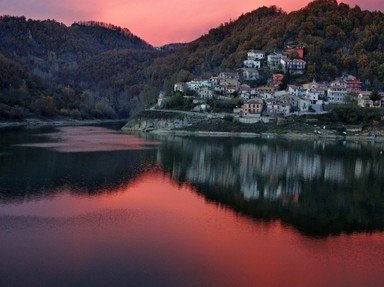Quiz Answer Key and Fun Facts
1. At which famous golf course, home of the US Masters tournament, will you find the Hogan Bridge?
2. Schlumbergera bridgesii is more commonly known as which of these floral festive favourites?
3. Bifrost, Ram Setu and Queqiao are bridges that appear in mythology.
4. The Puente de la Amistad, also known as the "Friendship Bridge", spans the Parana River and links Paraguay with which neighbouring country?
5. The trophy awarded to the winners of the Contract Bridge World Championships is named after which island where the first competition was held in 1950?
6. In which country would you find the Kapellbrucke or Chapel Bridge, widely regarded Europe's oldest wooden covered bridge?
7. "Composed Upon Westminster Bridge, September 3, 1802" is a poem by which English Romantic writer better known for his descriptions of nature?
8. The idea of building bridges to unite people, not walls to divide them is not a new one. At the funeral of which world leader was this idea included in the homily?
9. In what discipline would you find yourself doing a Setu Bandha Sarvangasana, aka the Bridge Pose?
10. The Japanese footbridge takes pride of place in the Giverny garden of which artist?
Source: Author
KayceeKool
This quiz was reviewed by FunTrivia editor
agony before going online.
Any errors found in FunTrivia content are routinely corrected through our feedback system.
